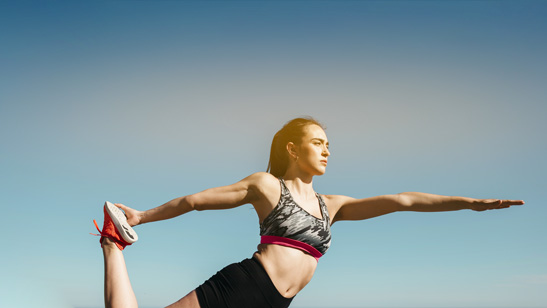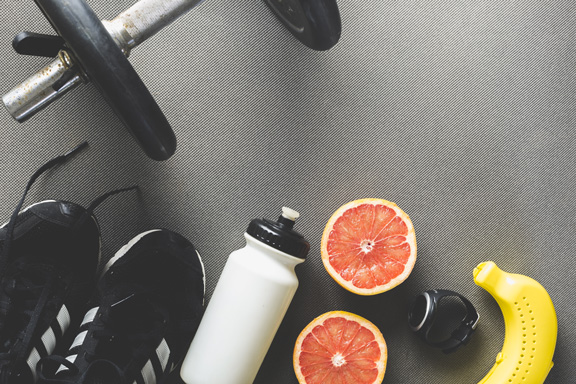KEYWORDS
Female athlete
Sports nutrition
Female-centric research
Female athletic performance
Business opportunity
Nutrition industry
Metabolic
Joint
Immunity
Abstract
Female athletes come in all ages and sports disciplines, and optimizing their nutrition is crucial for enhancing performance, health, and overall well-being. Despite the growing participation of women in sports, the nutritional needs of female athletes are often underrepresented and insufficiently addressed in scientific research and industry practices. This article explores the current state of female athletic nutrition, highlights the gaps in research, and identifies opportunities for the nutrition industry to better support female athletes and industry bottom lines.
Women & supplements
Supplement use is widespread among women, with 57.6% of women aged 20 and over reporting the use of dietary supplements in the past 30 days. Supplement usage tends to increase with age, peaking at 80.2% among women aged 60 and over. This trend underscores the importance of understanding the specific nutritional needs of female athletes across different age groups and tailoring supplements to meet these needs effectively (1).
Women & exercise
Regular participation in physical activities is common among women, with 51% of European women engaging in sports or exercise weekly (2). In the USA in 2020, 20.4% of women met the guidelines for both aerobic and muscle-strengthening activities (3). Despite this level of engagement, there is a significant lack of research focusing on female athletes, particularly in understanding their unique physiological and nutritional requirements.
In addition, there is a gender gap in exercise opportunity as well as nutrition research and products to support exercise. The largest global study ever conducted on the gender exercise gap recently revealed that:
- The more women move, the better they feel. Women who exercise regularly are 52% happier, 50% more energized, 48% more confident, 67% less stressed and 80% less frustrated.
- But, over half of women are not exercising as much as they would like and missing out on the physical and mental benefits of exercise.
- All women are facing a myriad of universal challenges and barriers to exercise, throughout their lifetime.
The global study on nearly 25,000 women commissioned by ASICS and led by Dr Dee Dlugonski, Assistant Professor at Sports Medicine Research Institute, University of Kentucky, and Associate Professor Brendon Stubbs of King’s College London revealed that over half of women are unhappy with their exercise levels. All women are experiencing barriers to exercise throughout their lifetimes, fromtime pressures (74%) and low self-confidence (35%) to intimidating environments (44%) or not feeling sporty enough (42%). What’s more, almost two-thirds (61%) of mothers cited motherhood as the primary reason they dropped out of doing regular exercise or sport altogether (4).
The data we lack
Underrepresentation in Research
A major issue in sports medicine and exercise science is the underrepresentation of female participants. From 2014 to 2020, only 34% of study participants were female, and a mere 6% of studies included female-only designs, compared to 31% male-only studies (5). In supplement-specific research examining evidence-based performance supplements, only 23% of total subjects were female and 34% of all studies included at least one female. Female-only studies ranged from 0-8%, with only 0-2% designed to compare sex-based responses. There were 8-times fewer female-specific studies versus exclusively male subject sets. This disparity highlights the urgent need for more inclusive research that addresses the specific needs of female athletes (6).
For example, why exclude female master rowers from a study on the influence of supplemental beetroot juice on the performance of master rowers? One misses the opportunity for a single inclusive evidence-based study where the only study design difference would be a question regarding menopausal status (7).
With a growing emphasis on a health versus disease paradigm, personal approaches to prevention, fitness and nutrition are clearly understood as a requirement for enhancements in quality of health and performance throughout a lifetime. Yet within sports science and active nutrition research literature, female representation is still dramatically lacking, and misinformation regarding personal health strategies for females seems to be rising exponentially.
Currently only 3% of sports nutrition products are targeted toward women. Sales of products marketed to women in weight loss, energy and other health categories grew 6% in 2023 (8). Oftentimes brands put products into the sports nutrition category that are in fact targeting weight loss, fat burning, or even sexual function. Here is a critical problem: female athletes, just like their male counterparts, want to improve performance. They want to run faster, jump higher, and lift heavier, not get skinnier and sexier. We have yet to leave behind that misogynistic messaging, whether overt or covert, and it is not appealing to a female athlete consumer.

The data we have
The primary need for all athletes, and in particular female athletes, is to achieve adequate energy intake to meet their energy requirements and achieve optimal energy availability at all times. We do have data, yet there is a need for evidence-based nutritional products designed to support strategies that achieve energy and nutrient timing relative to training adaptations, performance and health.
Low Energy Availability (LEA)
Low Energy Availability (LEA) occurs when energy intake is insufficient to meet the energy expenditure of exercise plus the daily energy needs of the body, leading to inadequate energy for essential physiological functions. While this is not exclusive to female athletes, the motherload of the research has been conducted on female athletes. LEA is the underlying condition that leads to Relative Energy Deficiency in Sport or RED-S, found in both genders (9).
LEA can result in negative health outcomes such as hormonal imbalances, decreased bone density, and impaired metabolic function. Female athletes are particularly susceptible to LEA due to their often-high training loads combined with societal pressures to maintain a certain body image. Long-term outcomes of LEA typically are poor health and performance, and not uncommonly withdrawal from sport (10).
Menstrual Cycle and Energy Intake
The menstrual cycle significantly influences energy intake and expenditure in female athletes. During the late follicular phase, when estrogen levels are high and progesterone levels are low, resting metabolic rate (RMR) is low, and energy intake is at its lowest. In contrast, during the mid-luteal phase, both estrogen and progesterone peak, increasing RMR and energy intake by approximately 300 kcal/day in recreational female athletes (11).
Despite the fact that these fluctuations exist, we know that on competition days, the most influential factors are training, preparation and the psychological state of the athlete, and not the phase of their menstrual cycle. However, understanding these variations may be essential for optimizing nutrition strategies to enhance performance and recovery throughout the menstrual cycle.
Menopause, training, and performance
Little is known about the impact of peri-menopause, menopause, and post-menopause on training and performance. Aging affects fluid balance, with older women experiencing slower water excretion and increased risk of hyponatremia. Rehydration processes also slow down with aging. Estrogen-based hormone replacement therapy can lead to greater overall fluid retention due to increased sodium retention. Research in this area is vital for developing effective nutritional strategies for older female athletes (11).

A few supplements with data
It is quite clear that female athletes, like males, benefit from optimal protein and carbohydrate consumption. Both are linked to energy requirements and training goals, and timing of consumption may be important as well. According to the International Society of Sports Nutrition Position Stand: Nutrition Concerns of the Female Athlete:
“Evidence for sex-specific supplementation is lacking due to the paucity of female-specific research and any differential effects in females. Caffeine, iron, and creatine have the most evidence for use in females. Both iron and creatine are highly efficacious for female athletes (11)".
Opportunities in female athletic nutrition
The nutrition industry has a significant opportunity to cater to the specific needs of female athletes by focusing on evidence-based, female-centric products. This does not mean that female-centric research data will always lead to products targeted exclusively to females. There may be many instances where the needs of females are similar or even the same as the needs of males. However, armed with data on both males and females, product development and marketing will be evidence-based and authentic for the entire market. Key areas of opportunity include:
- Research and Development: There is a pressing need for more research on female athlete nutrition, focusing on performance-enhancing strategies that consider female biology and physiology. Studies should explore the effects of various nutrients, supplements, and dietary patterns on female athletes across life stages.
It is particularly important for female master athletes to be represented in studies as there are extremely limited data pertaining to their needs, and their population numbers are growing. The excuse of hormonal cycling as a difficult and expensive study design is eliminated. Other than questions regarding menopausal status there are no study design differences that appear to be necessary at this time to include female master athletes in studies that also include male master athletes. This audience is typically well-educated, very health and performance focused, and the greatest users of supplements among all ages.
Wouldn’t the return on investment be greater if study results could be applied to females as well as males? It is my opinion that the lack of inclusion of female athletes is bad for business as well as bad for a brand’s social contract with consumers. It is also my opinion that studies (such as the master rower research noted above) should be required by Institutional Review Boards, Ethics Committees and journal peer-reviewers to include female subjects unless there is an overriding reason for exclusion.
In addition, it is likely that brands will discover that some of their products meet the needs of both male and female subjects, and now they will have evidence to support both populations.
- Energy and Nutrient Timing: Optimal energy and nutrient timing are critical for avoiding hormonal disruptions and supporting energy metabolism. Developing products that provide targeted energy and nutrient delivery throughout the day can help female athletes maintain energy balance and improve performance.
- Female-Centric Product Development: Creating products that cater to the preferences and needs of female athletes can enhance their performance and overall health. This includes multi-function ingredients and products that support lifestyle, health, and performance, including for post-partum, peri-menopausal and post-menopausal athletes.
Additionally, there should be an intense focus on the development of products to support the needs of women who aspire to exercise and/or increase their exercise efforts. With so many obstacles listed by women that interfere with their exercise intentions, undoubtedly there could be nutritional strategies that might help to work around or even break through some of these obstacles.
There are so many areas of low-hanging fruit that are wide open for R&D and brand differentiation throughout the female lifecycle:
- Energy
- Protein
- Carbohydrate
- Fat
- Fluid/electrolytes
- Micronutrients
- Phytonutrients
- Gut health
- Immunity/stress
- Cardiorespiratory health
- Muscular strength, power, speed, agility, recovery
- Mental focus/mood
- Sleep/fatigue/travel
- Eating, fueling and hydrating occasions
- Nutrient timing
- Convenience
- Leadership and Representation: According to the 2022 Women in the Workplace report from McKinsey & Co., one in three C-suite leaders are women and less than one-third of senior leadership are women. Looking at the nutraceutical industry worldwide, just over one-third of the positions are held by women. The smaller the company the more likely they are to be led by women (12).
Increasing female representation in scientific research and industry leadership is essential for driving the development of female-centric nutrition products. Initiatives such as the Women In Nutraceuticals (WIN) (13) association are advocating for gender parity in leadership and scientific roles, which can lead to more inclusive and effective product development and offerings.
Diverse companies are better positioned to capture new markets – increasing both performance and profits. Current leaders believe that greater female representation in decision-making roles in industry will drive the impetus toward more evidence-based, female-centric nutrition and health products that better meet the needs of the consumer and raise their bottom lines.
Conclusion
A lack of research has allowed Madison Avenue to swoop in and masquerade as sports nutrition experts for females. The growth of social media influencers not held to account for evidence-based guidance has fostered a misguided sense in the public that the lack of science is irrelevant, or even worse, that science-based guidance is untrustworthy.
Optimizing nutrition for female athletic performance requires a comprehensive approach that includes increased research, targeted evidence-based product development, and greater female representation in the industry in both science and business. By addressing the unique nutritional needs of female athletes, the nutrition industry can support their health, performance, and well-being, ultimately leading to improved outcomes and expanded market opportunities. The time is ripe for a concerted effort to bridge the gap in female athletic nutrition and provide evidence-based solutions that empower female athletes to achieve their full potential.
References and notes
- Mishra S, Stierman B, Gahche JJ, Potischman N. Dietary supplement use among adults: United States, 2017–2018. NCHS Data Brief, no 399. Hyattsville, MD: National Center for Health Statistics. 2021. [DOI: https://doi.org/10.15620/cdc:101131]
- European Commission, Directorate-General for Education, Youth, Sport and Culture. Special Eurobarometer 525 - Sport and Physical Activity. European Union, 2022 [Sport and physical activity - settembre 2022 - - Eurobarometer survey (europa.eu)]
- CDC National Center for Health Statistics. Elgaddal N, Kramarow EA, Reuben C. Physical Activity Among Adults Aged 18 and Over: United States, 2020NCHS Data Brief No. 443, August 2022 [Products - Data Briefs - Number 443 - August 2022 (cdc.gov)]
- Australian Associated Press Global Newswire ASICS Study Confirms Positive Link Between Exercise and Women’s Mental Health, Yet Worryingly Over Half of Women Around the World Are Dropping Out or Stopping Exercise CompletelyFebruary 27, 2024 [ASICS Study Confirms Positive Link Between Exercise and Women’s Mental Health, Yet Worryingly Over Half of Women Around the World Are Dropping Out or Stopping Exercise Completely – Australian Associated Press (aap.com.au)]
- Cowley, Emma & Olenick, Alyssa & Mcnulty, Kelly & Ross, Emma. (2021). “Invisible Sportswomen”: The Sex Data Gap in Sport and Exercise Science Research. Women in Sport and Physical Activity Journal. 29. 1-6. 10.1123/wspaj.2021-0028. [DOI:10.1123/wspaj.2021-0028]
- Smith, Ella S., Alannah K. A. McKay, Megan Kuikman, Kathryn E. Ackerman, Rachel Harris, Kirsty J. Elliott-Sale, Trent Stellingwerff, and Louise M. Burke. 2022. "Auditing the Representation of Female Versus Male Athletes in Sports Science and Sports Medicine Research: Evidence-Based Performance Supplements" Nutrients 14, no. 5: 953. [Nutrients | Free Full-Text | Auditing the Representation of Female Versus Male Athletes in Sports Science and Sports Medicine Research: Evidence-Based Performance Supplements (mdpi.com)]
- Garnacho-Castaño, Manuel V., Eulogio Pleguezuelos-Cobo, Marina Berbel, Alfredo Irurtia, Marta Carrasco-Marginet, Jorge Castizo-Olier, Pablo Veiga-Herreros, Marcos Faundez-Zanuy, and Noemí Serra-Payá. 2024. “Effects of Acute Beetroot Juice Intake on Performance, Maximal Oxygen Uptake, and Ventilatory Efficiency in Well-Trained Master Rowers: A Randomized, Double-Blinded Crossover Study.” Journal of the International Society of Sports Nutrition 21 (1). [doi:10.1080/15502783.2024.2373170].
- Casteel, B. All things supplements: Sales trends in the U.S. Market. SPINS Data. Live presentation. Vitafoods Europe Thursday, May 16, 2024
- Wasserfurth, P., Palmowski, J., Hahn, A., & Krüger, K. (2020). Reasons for and Consequences of Low Energy Availability in Female and Male Athletes: Social Environment, Adaptations, and Prevention. Sports medicine - open, 6(1), 44. [https://doi.org/10.1186/s40798-020-00275-6]
- Keay N, Rankin A. Infographic. Relative energy deficiency in sport: an infographic guide. British Journal of Sports Medicine 2019;53:1307-1309. [http://orcid.org/0000-0001-6663-7010]
- Sims, S. T., Kerksick, C. M., Smith-Ryan, A. E., Janse de Jonge, X. A. K., Hirsch, K. R., Arent, S. M., … Antonio, J. (2023). International society of sports nutrition position stand: nutritional concerns of the female athlete. Journal of the International Society of Sports Nutrition, 20(1). [Full article: International society of sports nutrition position stand: nutritional concerns of the female athlete (tandfonline.com)]
- Nutraceutical Business Review. Study reveals more is needed for gender parity in nutraceuticals. 15-May-2023 [https://nutraceuticalbusinessreview.com/study-reveals-more-is-needed-for-gender-parity-in-nutraceuticals-208822]
- https://www.womeninnutraceuticals.org



